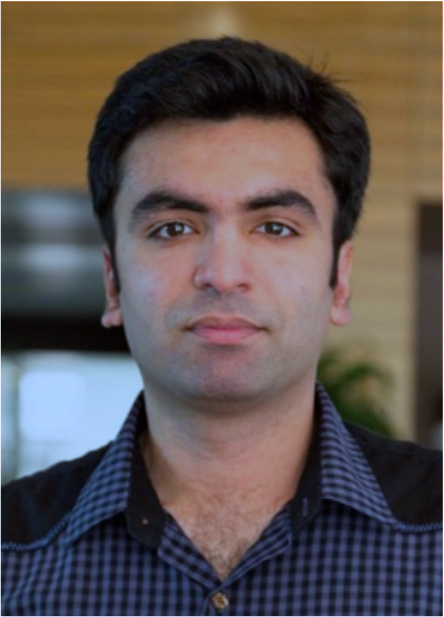Resource Management for On-Demand Mission-Critical Internet of Things Applications
Speakers
Muhammad Junaid Farooq, New York University (NYU), USA, Email: mjf514@nyu.edu
Quanyan Zhu, New York University (NYU), USA, Email: qz494@nyu.edu
Abstract
The Internet of things (IoT) is an emerging paradigm that allows the interconnection of devices which are equipped with electronic sensors and actuators. It allows for a higher level of situational awareness and effective automated decisions without human intervention. The concept has proven to be extremely useful in applications such as smart homes, energy management, smart cities, transportation, health care, etc. The IoT is not a stand-alone system and is composed of various different interconnected components starting from the endpoint devices to access points to cloud servers and user devices. There are a plethora of resources, at each stage of the IoT ecosystem, which need to be managed effectively to cater for the demands of potentially mission-critical (MC) applications. The MC applications may be highly delay-sensitive, e.g., real time systems involving artificial intelligence (AI), virtual and augmented reality (VR/AR), real-time control loops, streaming analytics, etc. There is a need for effective management of resources within the IoT ecosystem to cater for the demand of on-demand MC applications.
Efficient allocation of finite resources is a crucial problem in a wide variety of on-demand smart city applications. Service requests often appear randomly over time and space with varying intensity. Resource provisioning decisions need to be made strategically in real-time, particularly when there is incomplete information about the time, location, and intensity of future requests. Resource management has traditionally been focused on dealing with objectives such as efficiency, capacity, throughput, etc., in mind. However, often the underlying incentives and economic aspects have been ignored. This tutorial aims to provide an economic perspective on the resource management in IoT systems with particular emphasis on mission-critical services and applications. This tutorial will consider three main areas of resource management in MC-IoT, i.e., spectrum management via reservation, allocation of cloud/fog resources to IoT applications, and resource provisioning to smart city service requests. Leveraging theories from dynamic mechanism design, optimal control theory, and spatial point processes, this tutorial provides an overview of integrated decision-making frameworks that deal with resource management from an economic perspective. The tutorial will be self-contained, providing sufficient background for the audience to assimilate the key technical ideas and be inspired to solve related problems in the IoT space. The tutorial will conclude with discussing future directions and relevant problems on the economics of resource management from new perspectives such as security and resilience.
Outline
The tutorial will be divided into five main parts. The first part will focus on introducing and motivating the need for developing mechanisms for resource management in IoT systems particularly for mission-critical applications. It will also introduce some fundamental concepts in mechanism design theory such as individual rationality and incentive compatibility. Furthermore, a brief discussion about the emerging applications and research challenges will be provided with particular emphasis on three main directions, i.e., spectrum management through reservation, cloud/fog resource allocation in cloud systems, and dynamic resource provisioning to spatio-temporal service requests. The second part will address the problem of spectrum management in MC-IoT applications via reservation based access. It will provide a detailed treatment of developing a revenue maximizing contract particularly designed to focus on providing reservation based spectrum access to applications. The next application is related to allocating of virtual machines in cloud systems. It will first describe the allocation and pricing of cloud resources to computational requests by IoT devices. Then, it will extend the idea of allocation to a edge/fog architecture where the resource management is based on the quality of experience of the applications. The final application tends to include the spatial dimension in the resource management decision. It provides a more generic treatment of resource provisioning to spatio- temporal service requests and can be tailored to a wide variety of smart city applications. Finally, the tutorial will be concluded, with a summary and highlights of potential research directions. The detailed outline and the tentative schedule are highlighted below.
Part I: Introduction and Motivation (30 mins)
- Introduction to the IoT and CPS networks.
- On-Demand mission-critical IoT applications.
- Challenges and research problems.
- Preliminaries of mechanism design (Incentive compatibility, Individual Rationality).
Part II: Spectrum Management through Reservation for MC-IoT Applications (30 min)
- Massive surge of IoT and spectrum scarcity problem.
- Network configuration and the spectrum reservation policy
- Information asymmetry and optimal contracting problem
- Dynamic contract design for spectrum reservation
Part III: Resource Allocation in Cloud/Fog-Enabled IoT systems (1 hour 15 min)
- Allocation policy and pricing model of cloud resources
- Revenue maximization approach to allocating virtual machines in the cloud
- QoE based allocation in cloudlets/fog computing systems
Part IV: Resource Provisioning to Spatio-Temporal requests in Smart City Applications (30 min)
- Spatio-Temporal IoT requests and the resource provisioning problem.
- Stochastic modeling and analysis of utility.
- Obtaining an optimal dynamic allocation policy and implementation details.
Part V: Conclusions and Future Research (15 mins)
- Conclusions and key takeaways.
- Future research directions (e.g., data-driven mechanisms, mechanisms with bounded rationality).
Relevance to DySPAN
The Internet of things (IoT) is revolutionizing the management and control of automated systems leading to a paradigm shift in areas such as smart homes, smart cities, health care, transportation, etc. The IoT ecosystem is diverse and comprises of an integration of various different resources that play a crucial role in the eventual goal of providing services to mission-critical applications. To reap the benefits of this complex integration of systems that comprise the IoT, there is a need for effective management of resources at every layer of the IoT ecosystem. It involves managing spectrum resources at the physical layer to scheduling and prioritization of resource allocation at higher levels such as the cloud/fog computing nodes. Traditional approaches towards resource management have emphasized on the efficiency and capacity of such systems such as dynamic spectrum access to improve the capacity of wireless channels. However, an economic viewpoint involving pricing and revenue driven approach towards resource management is becoming increasingly important, particularly with the advent of MC-IoT applications.
This tutorial will first focus on some fundamental concepts in mechanism design theory that are essential for the treatment of MC-IoT applications. Then, we would focus on three different application areas in the IoT space. At the physical layer, it will discuss the problem of reserving spectrum resources to mission-critical applications. The cloud/fog resource allocation and pricing will discuss a revenue maximization approach. Finally, the tutorial will discuss adding the spatial dimension to the resource provisioning problem to provide a more holistic treatment.
Intended Audience
The target audiences are researchers and engineers working on different layers/components of the emerging technologies such as IoT and CPS. The goal of the tutorial is to enable the audience to construct higher-level policy decisions using an economic and commercial approach. The presentation is designed such that at least 50% of the tutorial is accessible for a broad range of audience with general electrical engineering and/or computer science background. Then, 35-40% of the tutorial is designed for audience specialized in wireless communications and dynamical systems theory. The remaining 10-15% is designed for audiences who are specialized in stochastic modeling, analysis, and optimization. Important reading materials will be highlighted through a comprehensive taxonomy.
Speaker Bios
 Muhammad Junaid Farooq received the B.S. degree in electrical engineering from the School of Electrical Engineering and Computer Science (SEECS), National University of Sciences and Technology (NUST), Islamabad, Pakistan, the M.S. degree in electrical engineering from the King Abdullah University of Science and Technology (KAUST), Thuwal, Saudi Arabia, in 2013 and 2015, respectively. Then, he was a Research Assistant with the Qatar Mobility Innovations Center (QMIC), Qatar Science and Technology Park (QSTP), Doha, Qatar. Currently, he is a Ph.D. student at the Tandon School of Engineering, New York University (NYU), Brooklyn, New York. His research interests include modeling, analysis, and optimization of wireless communication systems, cyber-physical systems, and the Internet of things. He is a recipient of the President's Gold Medal for academic excellence from NUST, the Ernst Weber Fellowship Award for graduate studies and the Athanasios Papoulis Award for teaching excellence from the Department of Electrical & Computer Engineering (ECE) at NYU Tandon School of Engineering. Website: http://www.junaidfarooq.com
Muhammad Junaid Farooq received the B.S. degree in electrical engineering from the School of Electrical Engineering and Computer Science (SEECS), National University of Sciences and Technology (NUST), Islamabad, Pakistan, the M.S. degree in electrical engineering from the King Abdullah University of Science and Technology (KAUST), Thuwal, Saudi Arabia, in 2013 and 2015, respectively. Then, he was a Research Assistant with the Qatar Mobility Innovations Center (QMIC), Qatar Science and Technology Park (QSTP), Doha, Qatar. Currently, he is a Ph.D. student at the Tandon School of Engineering, New York University (NYU), Brooklyn, New York. His research interests include modeling, analysis, and optimization of wireless communication systems, cyber-physical systems, and the Internet of things. He is a recipient of the President's Gold Medal for academic excellence from NUST, the Ernst Weber Fellowship Award for graduate studies and the Athanasios Papoulis Award for teaching excellence from the Department of Electrical & Computer Engineering (ECE) at NYU Tandon School of Engineering. Website: http://www.junaidfarooq.com
 Quanyan Zhu received B. Eng. in Honors Electrical Engineering from McGill University in 2006, M.A.Sc. from University of Toronto in 2008, and Ph.D. from the University of Illinois at Urbana-Champaign (UIUC) in 2013. After stints at Princeton University, he is currently an assistant professor at the Department of Electrical and Computer Engineering, New York University. He is a recipient of many awards including NSERC Canada Graduate Scholarship (CGS), Mavis Future Faculty Fellowships, and NSERC Postdoctoral Fellowship (PDF). He spearheaded and chaired INFOCOM Workshop on Communications and Control on Smart Energy Systems (CCSES), and Midwest Workshop on Control and Game Theory (WCGT). His current research interests include resilient and secure interdependent critical infrastructures, energy systems, cyber-physical systems, and cyber-enabled sustainability. He is a recipient of best paper awards at 5th International Conference on Resilient Control Systems, and 18th International Conference on Information Fusion. He has served as the general chair of the 7th Conference on Decision and Game Theory for Security (GameSec) in 2016 and International Conference on NETwork Games, COntrol and OPtimisation (NETGCOOP) in 2018. Website: http://wp.nyu.edu/quanyan
Quanyan Zhu received B. Eng. in Honors Electrical Engineering from McGill University in 2006, M.A.Sc. from University of Toronto in 2008, and Ph.D. from the University of Illinois at Urbana-Champaign (UIUC) in 2013. After stints at Princeton University, he is currently an assistant professor at the Department of Electrical and Computer Engineering, New York University. He is a recipient of many awards including NSERC Canada Graduate Scholarship (CGS), Mavis Future Faculty Fellowships, and NSERC Postdoctoral Fellowship (PDF). He spearheaded and chaired INFOCOM Workshop on Communications and Control on Smart Energy Systems (CCSES), and Midwest Workshop on Control and Game Theory (WCGT). His current research interests include resilient and secure interdependent critical infrastructures, energy systems, cyber-physical systems, and cyber-enabled sustainability. He is a recipient of best paper awards at 5th International Conference on Resilient Control Systems, and 18th International Conference on Information Fusion. He has served as the general chair of the 7th Conference on Decision and Game Theory for Security (GameSec) in 2016 and International Conference on NETwork Games, COntrol and OPtimisation (NETGCOOP) in 2018. Website: http://wp.nyu.edu/quanyan





